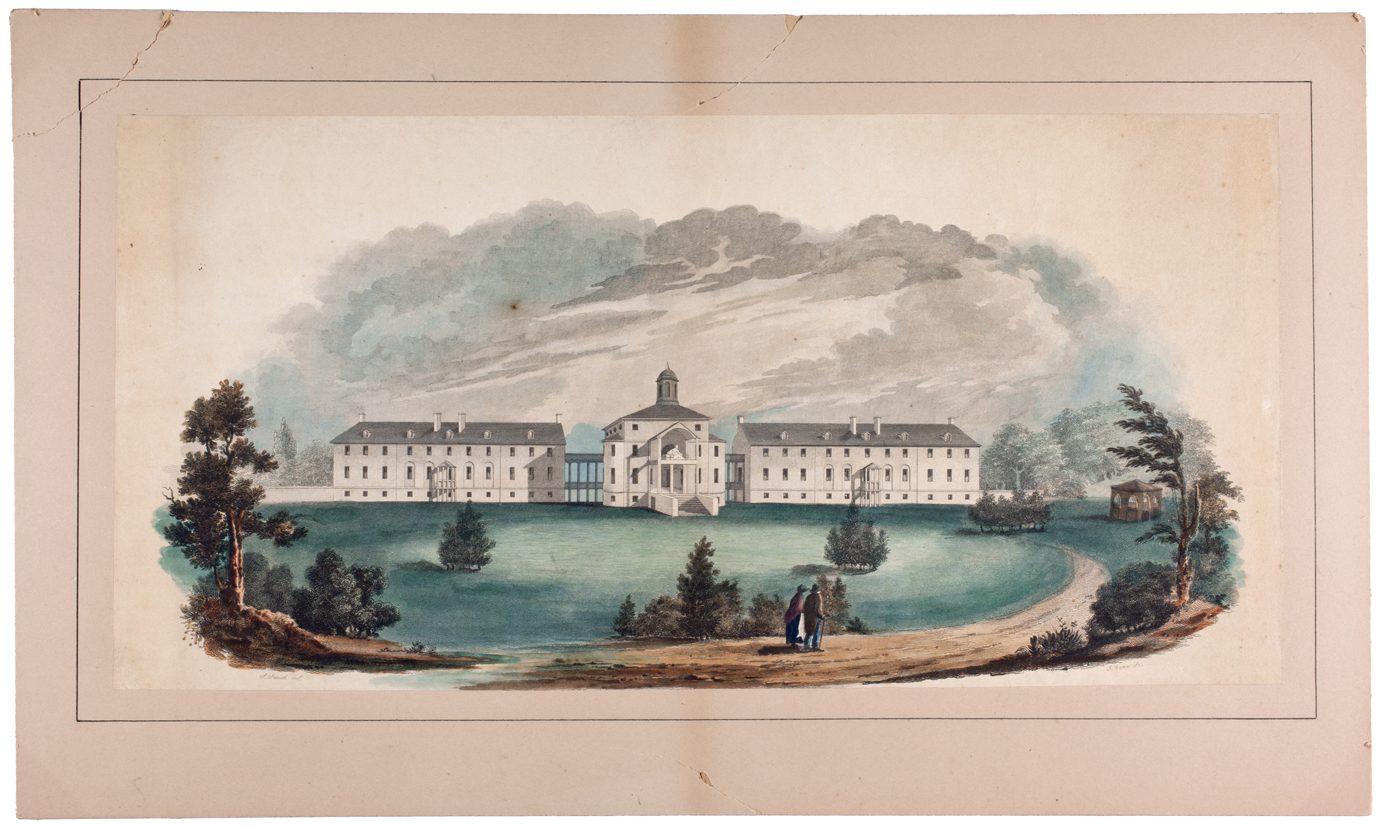Johns Hopkins Bayview Medical Center is one of the oldest continuous health care facilities on the East Coast.
Two decades before the founding of The Johns Hopkins Hospital, the then Baltimore Bay View Asylum opened in 1866 on the grounds of what is now Johns Hopkins Bayview. The asylum began treating the sick and mentally ill, laying claim to almost a century of service that originated at a previous location.
Today, with more than 450 beds, the academic medical center houses one of Maryland’s most comprehensive neonatal intensive care units, a comprehensive neurosurgery center/neuro-critical care unit, an areawide trauma center and the state’s only adult regional burn center.
Thanks to a new history exhibit at Johns Hopkins Bayview, employees and visitors can learn more about the hospital’s rich history.
Two years in the making, the permanent display is located in the Francis Scott Key Pavilion entrance lobby and spans the left wall. Organized in three sections — The People, The Places and The Work — it tells the story of the hospital from its beginning in 1773 with text and photos. A plasma screen highlights more current milestones such as the Care-A-Van and the Sidney Kimmel Cancer Center.
Sandy Reckert-Reusing, the medical center’s senior director of marketing and communications, oversaw the project. Working closely with exhibition designer Andrew Petitti, she combed through archives, gathering voices from the past and charting milestones. A major source for the exhibit is the 2004 history Centuries of Caring: The Johns Hopkins Bayview Medical Center Story, by Johns Hopkins Medicine senior writer Neil A. Grauer.
“What’s fascinating to have learned from this work,” says Reckert-Reusing, “is that we’ve always been dedicated to helping underserved populations.” She says she hopes the display will not only inform employees, patients and visitors about the hospital’s storied past, but also instill pride.
Sheree Riley, director of performance improvement and training, says she feels proud every time she walks by or stops to read a segment of the wall. “To think,” she says, “This is where I work! I’m really touched by it.”
“It connects me to our rich history,” says Elaine Clayton, director of nursing for Johns Hopkins Bayview Specialty Hospital.
Since its inception in 1994, Johns Hopkins Bayview has fostered collaboration across disciplines in clinical care, teaching and research programs. Those efforts have resulted in nationally recognized models of care, including the Johns Hopkins Burn Center, Women’s Center for Pelvic Health, Asthma & Allergy Center, and Memory and Alzheimer’s Treatment Center. The geriatric medicine and rheumatology programs, which are highly ranked by U.S. News & World Report, are also based on the campus.
And, says Reckert-Reusing, the community psychiatry program continues to fulfill the hospital’s original mission to serve those with mental health disorders. “It’s helping to get rid of the stigma,” she says.
Moreover, when Reckert-Reusing read up on founder Johns Hopkins, she says she learned that his motivation to start a hospital was the need to care for all people. “We at Hopkins Bayview were pursuing that mission even before we became part of Johns Hopkins Medicine.”

